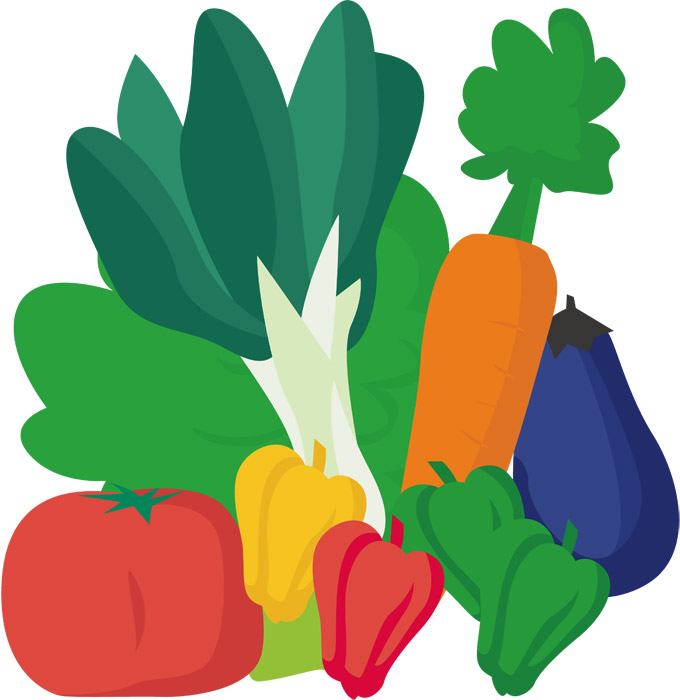Abstract
Vegetable production in Japan’s agriculture is made up of both domestic and imported produce. As per the data for 2022, domestic vegetable production will reach a maximum of 5.02 Mt, while imports will be 92.9 kt, an overwhelmingly smaller proportion compared to domestic production. The import share is low at 1.8%, which indicates that imports are only partially responsible for meeting domestic demand. In Japan’s vegetable market, domestic production is the norm, and emphasis is placed on high quality and stable supply, but there is also a certain demand for imported products. On the other hand, Japanese agriculture faces challenges such as labor shortages and limited arable land area, and these challenges are partly offset by reliance on imports. The ratio and characteristics of domestically produced and imported vegetables are likely to continue to change in the future due to changes in demand and the influence of agricultural policies.
Domestic vegetable quantity meter
Domestic vegetable production in Japan peaked at 8.44 Mt in 2005, but has since been on a downward trend. Data for 2022 shows it is at 5.01Mt, or 59.4% of the peak. This decline is likely due to several factors. One is structural challenges in agricultural production, such as a decrease in farmland and labor shortages due to an aging population. Fluctuations in demand due to changes in the market and changing consumer preferences may also be a factor. Furthermore, the competitiveness of imported vegetables and the expansion of international trade are also affecting domestic vegetable production. On the other hand, in recent years, there has been an increasing demand for regional brands and safe, reliable food ingredients, and there is also a movement towards local production and consumption. Against this background, efforts are being made to stabilize and increase domestic vegetable production through agricultural policies and technological innovation. Going forward, it will be necessary to realize sustainable agriculture while taking into consideration the balance between supply and demand.


The maximum is 8.44Mt[2005] of Vegetable meter, and the current value is about 59.4%
Vegetable import quantity
Vegetable imports play an important role in Japan’s agriculture. According to data for 2022, total imports by prefecture were 430kt, a record high. These figures indicate that imported vegetables are playing an increasingly important role in Japan’s vegetable market. The increase in imported vegetables is due to a number of factors. First, it plays a complementary role in cases where domestic production is insufficient to meet demand or in response to diversification of demand. Additionally, differences in climatic conditions and production costs may make it more economical to import from overseas. Furthermore, the liberalization of international trade and the conclusion of trade agreements are promoting the distribution of imported vegetables. On the other hand, an increase in imported vegetables could also affect the competitiveness of domestic agriculture and farmers’ incomes. Against this background, the quantity and quality control of imported vegetables is attracting attention from the perspective of domestic agricultural policies and food self-sufficiency. Going forward, it will be necessary to realize sustainable agriculture while responding to changes in demand and international situations.


The maximum is 430kt[2005] of Vegetable meter, and the current value is about 21.6%
Total vegetable import (proportion) quantity
The proportion of vegetable imports in Japan’s agricultural output peaked at 4.9% in 2005, but has since declined slightly. The 2022 data shows that the figure is 36.7% of the peak. This trend can be attributed to several factors. One reason may be that domestic agricultural production has begun to meet a certain level of demand and that confidence in the quality and safety of domestically produced vegetables has increased. Additionally, support measures for domestic agriculture, such as agricultural policy reforms and strengthening the competitiveness of domestic industries, may also be having an impact. In addition, price fluctuations of imported vegetables and restrictions on import volumes also have an impact. On the other hand, due to diversification of domestic demand and improvement in the quality of imported vegetables, a certain demand is being supplied by imports. In light of these circumstances, Japanese agriculture is seeking to build sustainable production systems and strike a balance between supply and demand, even as it is influenced by domestic and international factors. The proportion of imported vegetables is likely to fluctuate in the future depending on changes in demand and policies.


The maximum is 4.9%[2005] of Vegetable meter, and the current value is about 36.7%



Comments